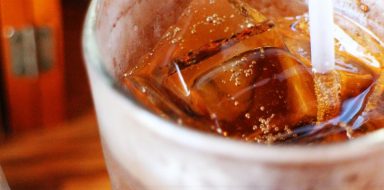Links, Diet, Signs and Treatments
Bladder cancer and overactive bladder (OAB) are two distinct conditions affecting the urinary system, but they can sometimes intersect in ways that impact diagnosis, treatment and management. Understanding these conditions, their connections and how to manage them through diet and treatment can be crucial for maintaining overall health. A common medication for bladder cancer is Opdivo, which helps the immune system fight off cancer cells.
Worst Drinks for OAB
- Caffeinated beverages: Coffee, tea and sodas can irritate the bladder and increase the frequency of urination. Reducing caffeine intake may help alleviate some OAB symptoms.
- Alcohol: Alcoholic beverages can irritate the bladder lining, leading to increased urgency and frequency. Limiting or avoiding alcohol can help manage symptoms.
- Artificial sweeteners: Some people find that artificial sweeteners can irritate the bladder. Avoiding products with these ingredients may reduce symptoms.
There's nothing like enjoying a cup of a coffee. Except, OAB and caffeine consumption can have some complications. Learn more here.
Worst Foods for OAB
- Spicy foods: Spicy foods can irritate the bladder and increase urgency and discomfort. Opting for milder food choices may provide relief.
- Acidic foods: Citrus fruits, tomatoes and other acidic foods can aggravate bladder symptoms. Reducing consumption of these foods may help soothe irritation.
Bladder Cancer and Overactive Bladder: The Connection
Bladder cancer is a malignancy that originates in the bladder's lining. Symptoms often include blood in the urine, frequent urination and painful urination. Overactive bladder (OAB) is a condition characterized by a sudden, uncontrollable urge to urinate frequently, often with little warning. While OAB itself is not a risk factor for bladder cancer, the symptoms of both conditions can overlap, making it important to differentiate between them for proper diagnosis and treatment.
In some cases, persistent OAB symptoms may prompt further investigation to rule out bladder cancer, especially if other risk factors are present. Conversely, if bladder cancer is diagnosed, it may impact the management and treatment approach for OAB.
Recognizing the Signs
Understanding the symptoms of both bladder cancer and OAB is crucial for early detection and effective treatment.
Bladder Cancer Symptoms
- Blood in urine (hematuria): One of the most common signs of bladder cancer.
- Frequent urination: An increase in the need to urinate, often urgently.
- Painful urination: Discomfort or pain during urination.
- Pelvic pain: Persistent pain in the lower abdomen or pelvis.
- Unexplained weight loss: Significant weight loss without an obvious cause.
OAB Symptoms
- Urgency: A sudden, strong need to urinate.
- Frequency: Frequent trips to the bathroom, often with little notice.
- Nocturia: Waking up multiple times during the night to urinate.
- Incontinence: Involuntary leakage of urine due to an inability to control the bladder.
Treatments for Bladder Cancer and OAB
Effective management of bladder cancer and OAB often involves a combination of medical treatments, lifestyle changes and dietary adjustments.
Bladder Cancer Treatments
- Opdivo: This medication helps the immune system fight cancer cells by using a "shield" called PD-L1 that binds to a "brake" on immune cells called PD-1. When this shield and brake connect, it tells the immune system to ignore the cancer cells. This allows the immune cells to recognize the bladder cancer cells as dangerous and attack them, which helps slow down or stop the cancer from growing.
- Surgery: Removal of the tumor or affected part of the bladder through procedures like transurethral resection (TURBT) or cystectomy.
- Chemotherapy: Medication used to kill cancer cells, often administered before or after surgery.
- Radiation therapy: Targeted radiation to destroy cancer cells.
- Immunotherapy: Boosting the body's immune system to fight cancer cells.
OAB Treatments
- Medications: Anticholinergics, beta-3 agonists and other drugs to reduce urgency and frequency.
- Behavioral therapy: Techniques like bladder training and pelvic floor exercises to manage symptoms.
- Lifestyle changes: Dietary adjustments and fluid management to reduce irritants.
- Medical devices: Devices like pessaries or neuromodulation therapy for symptom relief.
Bladder Health
While bladder cancer and overactive bladder (OAB) are distinct conditions, their symptoms can overlap, making accurate diagnosis and treatment essential. Understanding the links between these conditions, being mindful of dietary choices and recognizing symptoms can help manage and treat both effectively. Regular consultations with healthcare professionals, combined with lifestyle and dietary adjustments, play a critical role in maintaining health and improving quality of life for individuals affected by these conditions.







